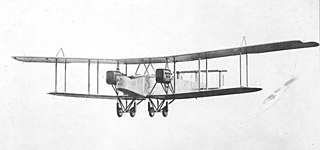
The Handley Page Type O was a biplane bomber used by Britain during the First World War. When built, the Type O was the largest aircraft that had been built in the UK and one of the largest in the world. There were two main variants, the Handley Page O/100 (H.P.11) and the Handley Page O/400 (H.P.12).

The Bristol Bombay was a British troop transport aircraft adaptable for use as a medium bomber flown by the Royal Air Force (RAF) during the Second World War.

The Handley Page Heyford was a twin-engine biplane bomber designed and produced by the British aircraft manufacturer Handley Page. It holds the distinction of being the last biplane heavy bomber to be operated by the Royal Air Force (RAF).

The Handley Page H.P.54 Harrow was a heavy bomber designed and produced by the British aircraft manufacturer Handley Page. It was operated by the Royal Air Force (RAF) and used during the Second World War, although not as a bomber.

The Handley Page H.P.24 Hyderabad was a twin-engine biplane heavy bomber designed and produced by the British aircraft manufacturer Handley Page. It holds the distinction of being the last wooden heavy bomber to be operated by the Royal Air Force (RAF).

The Gloster Goring was a single-engined two-seat biplane designed to meet 1926 Air Ministry specifications for a day/torpedo bomber. It was not put into production and the one aircraft built served later as an engine testbed.

The Gloster TC.33 was a large four-engined biplane designed for troop carrying and medical evacuation in the early 1930s. Only one was built.

The Bristol Berkeley was built to a British government specification for a single-engine day or night bomber. Three of these two-seat biplanes were built, but no contract for further production was awarded.
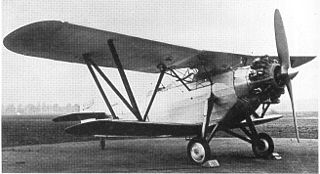
The Bristol Type 118 was a general-purpose military aircraft, a two-seat biplane built by the Bristol Aeroplane Company in the early 1930s, powered by a Bristol Mercury radial engine and aimed at overseas markets. The Type 120 was a Bristol Pegasus-engined variant entered into an Air Ministry competition and later used for armament tests. Two aircraft were built.

The Vickers Type 253 was a single-engined two-seat biplane general-purpose military machine built to a 1930 government specification. It won a production contract, but this was transferred to the same company's monoplane equivalent, the Wellesley. Only one Type 253 was built.

The Handley Page Type G was a two-seat British biplane, designed by Handley Page that first flew in 1913. Only one was built.
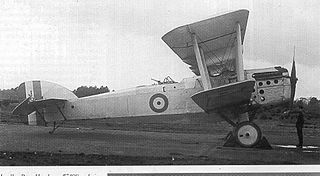
The Handley Page Handcross was a single-engined biplane day bomber built to an Air Ministry specification. It was not put into production and only the three prototypes were built.
The Handley Page H.P.51 was a monoplane conversion of the earlier, unsuccessful biplane bomber-transport aircraft, the Handley Page H.P.43. The Air Ministry ordered the production variant off the drawing board as the Handley Page H.P.54 Harrow bomber.
The Handley Page H.P.46 was a two-seat, single-engined biplane built to an Air Ministry specification for a carrier-based torpedo bomber. With an advanced combination of high lift, slow flying controls it was beset by handling problems and made few flights.
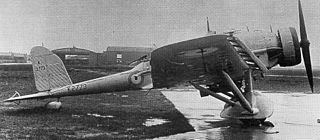
The Handley Page H.P.47 was a British single-engined low-wing monoplane built to an Air Ministry specification for a general-purpose bomber and torpedo bomber aircraft. Only one was built.

The Handley Page H.P.20 was an experimental monoplane modification of a de Havilland DH.9A, built to study controllable slots and slotted ailerons as high lift devices. It was the first aircraft to fly with controllable slots.

The Handley Page H.P.31 was a two-seat single-engined biplane built to a British specification for a carrier-based torpedo bomber and reconnaissance aircraft. After trials, the Blackburn Ripon was preferred, though the Harrow played a significant role in the development of automatic slots.

The Handley Page Type D or H.P.4 was a single-seat, single-engined tractor monoplane, the first Handley Page design to fly for more than a few hops. Only one was built.
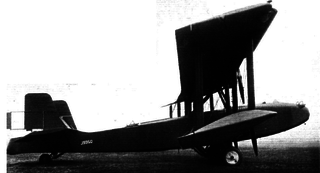
The sole Boulton & Paul P.32 was a British three-engined biplane built to an Air Ministry specification for a long range night bomber. A lack of engine availability slowed construction and by the time it went for tests the thinking on bomber types had moved on.
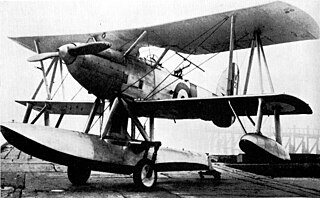
The Short Gurnard was a single-engined two-seat biplane naval fighter, built in the United Kingdom to an Air Ministry specification in 1929. It failed to win production orders and only two flew.


















